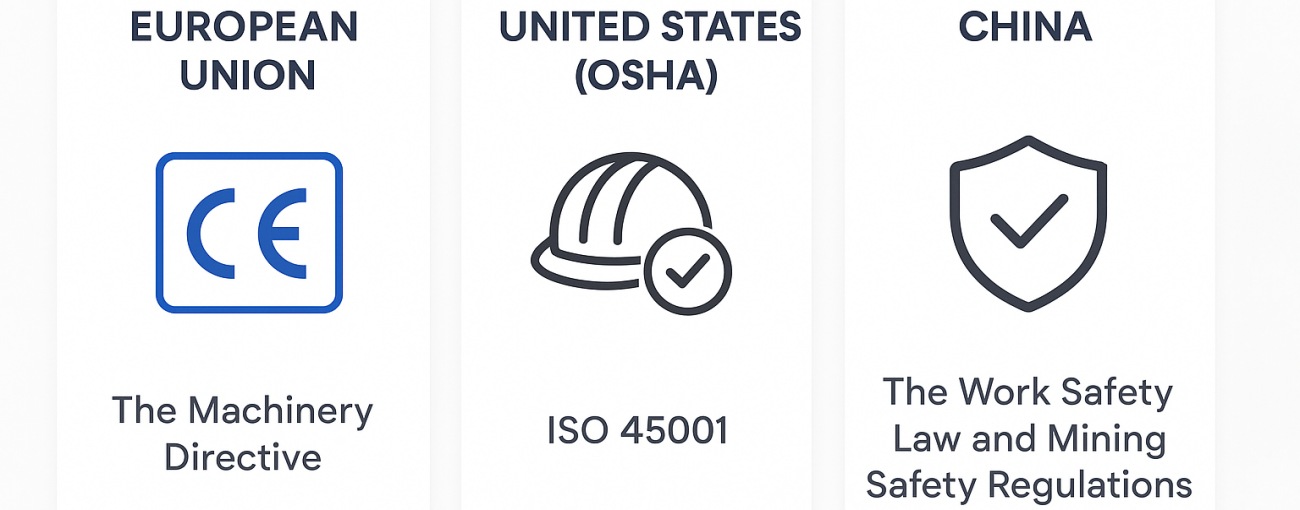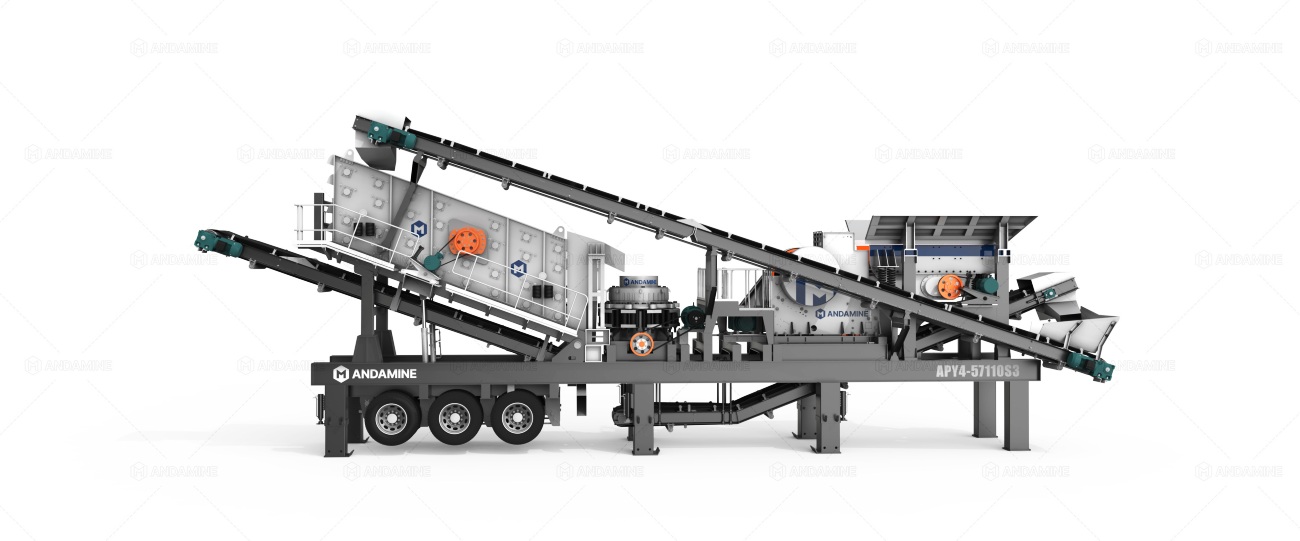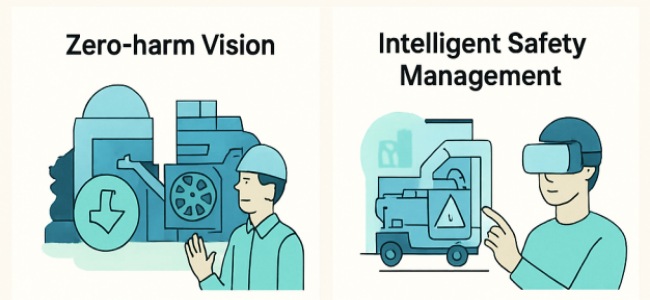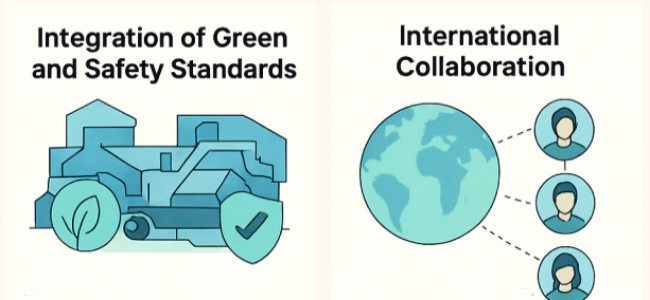Crushing operations are vital in mining, aggregate production, and construction waste recycling, involving jaw crushers, impact crushers, cone crushers, and mobile stations. Rapid infrastructure growth increases demand, but dust, noise, and high-intensity machinery create serious safety risks. This article highlights key hazards, reviews safety standards, and explores best practices and emerging trends to ensure safer, more efficient crushing operations.

Current Safety Risks in the Industry

Global Accident Statistics and Cases
Mining and aggregate operations involve high-risk equipment, including crushers, conveyors, mobile crushing plants and other machines. Common accidents in the industry include:
- Mechanical entanglement: Workers can be caught or crushed by moving parts of crushers or conveyors if safety guards are missing or procedures are not followed. Regular inspections, interlocks, and lockout–tagout (LOTO) systems are essential. Machinery entanglement is among the leading causes of mining injuries, accounting for over 40% of serious incidents in some reports.
- Falls: Maintenance on high hoppers, conveyor belts, or mobile crushing plants can lead to falls when proper fall protection is not used. Safety harnesses, guardrails, and working-at-height training are vital. Falls remain a recurring hazard in quarrying and mobile crushing operations. For instance, in August 2023, a miner with eight days of mining experience was fatally injured when a crusher lid fell and struck him.
- Dust exposure: Crushing operations generate large amounts of dust, which can cause respiratory diseases such as silicosis or chronic bronchitis over long-term exposure. Dust suppression systems, water sprays, and personal protective equipment (PPE) reduce this risk.
- Electrical hazards: Faulty wiring, lack of grounding, or poorly maintained control panels can result in electric shocks or fires. Regular maintenance and compliance with electrical safety standards are crucial. Conveyor belt accidents in South Africa’s mining sector, including those caused by electrical and mechanical failures, led to 13 deaths and 50 major injuries in 2023 alone.
Key Risk Factors
Crushers and crushing plants involve fast-moving mechanical components, increasing the likelihood of entanglement or crushing injuries.
Dust, noise, and vibrations can affect both workers’ health and nearby communities.
Uneven terrain, loose materials, and moving vehicles contribute to slips, trips, or collision risks.
Simultaneous maintenance and operation increase the chance of accidents, highlighting the need for clear SOPs and safety protocols.
Understanding these risks from the perspective of equipment operation and worksite realities is essential. Combining proper training, engineering controls, PPE, and automated monitoring can significantly reduce accidents, improve worker health, and enhance overall operational safety.
Safety Standards and Regulatory Requirements

International Standards and Regulations
- European Union: The Machinery Directive requires manufacturers to integrate comprehensive safety features during crusher design and production. These include protective guards, interlocks, emergency stops, and regular inspections to prevent operator injuries.
- ISO 45001: This international standard promotes systematic occupational health and safety management. It guides companies to identify hazards, assess risks, implement preventive measures, and continuously improve safety performance in crushing operations.
- United States (OSHA): OSHA enforces strict standards covering dust, noise, mechanical safety, and electrical protection. Companies should perform inspections, provide training, conduct maintenance, and maintain detailed records for crushers and mobile crushing stations.
China and Emerging Markets
- China: The Work Safety Law and Mining Safety Regulations clearly define operational safety for curshing equipment, covering mechanical safety, dust suppression, noise control, and electrical safeguards, with penalties for non-compliance.
- India and Southeast Asia: Dust, noise, and equipment safety regulations are gradually introduced; larger companies implement PPE protocols, routine inspections, automated monitoring, and internal standards to meet both legal and corporate requirements.
Corporate Compliance Pressure
With the increasing focus on ESG investment and green finance, effective safety management has become both a legal requirement and a key indicator of corporate competitiveness, operational reliability, and financing potential.
Safety Management Practices and Advanced Methods

Engineering Controls
- Crusher protection: Installing physical guards, safety barriers, and automatic shutdown devices on crushers significantly reduces the risk of worker contact with moving parts. Additionally, interlock systems and emergency stop functions ensure immediate shutdown in hazardous situations, enhancing overall operational safety.
- Mobile crushing plant protection: Enclosing hoppers, integrating intelligent water spray systems, and using bag filters effectively control dust emissions during crushing and screening operations. These measures help mobile crushing plants comply with urban construction environmental standards while protecting workers’ respiratory health.
- Noise reduction design: Utilizing electric drives, vibration-reducing mounts, and noise isolation devices lowers operational noise levels for both workers and nearby communities. Coupled with soundproof enclosures and proper equipment placement, these strategies contribute to a safer and more comfortable work environment.
Management Systems
Providing comprehensive training ensures operators and maintenance personnel are fully familiar with the safety procedures of crushing equipment. Regular certification programs help reinforce proper handling techniques and hazard awareness, reducing the likelihood of accidents during operation and maintenance.
Implementing clear SOPs for equipment startup, operation, and shutdown, combined with routine inspections, helps identify potential hazards early. This systematic approach minimizes human errors, ensures equipment operates safely, and maintains consistent operational performance.
Establishing detailed emergency procedures and conducting regular drills prepares personnel to respond quickly and effectively in case of equipment malfunction, fire, dust incidents, or mechanical accidents. These proactive measures improve overall site safety and reduce potential operational downtime.
Effective safety management also requires attention to human factors. Fatigue monitoring, attention management, and psychological safety programs reduce operator errors. Incorporating behavioral training, stress management, and teamwork protocols ensures personnel remain alert, confident, and capable of responding safely under high-risk conditions.
Digital and Intelligent Safety
Sensor monitoringReal-time tracking of crusher vibration, hopper dust concentration, and mobile crushing station operation enables early detection of irregularities. Immediate corrective actions prevent equipment failures, reduce accident risks, maintain production continuity, and significantly enhance overall operational safety across high-intensity crushing processes.
AI predictive maintenanceAdvanced AI systems continuously analyze operational and environmental data to forecast potential equipment faults. Early warning alerts allow proactive maintenance scheduling, minimize unplanned downtime, prevent accidents, protect operators, and ensure both safe and efficient crushing operations across multiple sites.
Remote monitoring and automationRemote supervision combined with automated control systems reduces personnel exposure to hazardous areas. Operators can safely manage equipment from a distance, ensure compliance with safety protocols, optimize workflow, and maintain consistent operational efficiency in complex environments.
Example – Andamine 4-in-1 Mobile Crushing Station: Featuring one-touch startup via PLC touchscreen or manual buttons, this integrated system enables centralized, efficient control. Its modular design simplifies workflow, enhances operational safety, and ensures reliable, streamlined crushing processes, even in demanding or high-risk work environments.

Typical Case Studies
German Aggregate Plant: Advanced Dust and Noise Control
A leading German aggregate plant implemented electric jaw crushers equipped with intelligent spray systems and special belt covers. These measures significantly reduced dust emissions and noise levels, enhancing operational safety and environmental performance. The integrated water spraying system effectively contained airborne dust, benefiting both workers and nearby residents.
Chinese Mining Company: Remote Monitoring Enhances Safety
A prominent Chinese mining company deployed mobile crusher plants with remote monitoring platforms. This system enabled real-time tracking of equipment operations, allowing for predictive maintenance and early fault detection. As a result, unplanned downtime was significantly reduced, and operational risks were minimized, leading to improved safety and efficiency.
North American Urban Demolition Project: Enclosed Crushing Stations for Community Safety
In a North American urban demolition project, enclosed mobile crusher plants were utilized to minimize dust and noise pollution. These stations featured advanced dust suppression systems and noise-reducing technologies, ensuring compliance with environmental regulations and reducing the impact on nearby communities.
Future Trends and Directions


Zero-harm Vision
The crushing industry increasingly pursues a “zero accidents” goal. It fosters a strong safety culture and conducts thorough hazard assessments. Strict operational protocols are implemented. Continuous operator training is provided alongside advanced protective equipment.
Intelligent Safety Management
Digital twins simulate crusher and mobile station operations to identify risks before deployment. VR and AR training improve hazard recognition, strengthen emergency preparedness, and reduce accidents in high-risk tasks.
Integration of Green and Safety Standards
Modern crushing plant equipment features low-carbon design and energy efficiency, with dust and noise suppression. Environmental compliance and operator safety ensure sustainable operations, meeting both ecological and occupational objectives.
International Collaboration
Companies share global accident data, best practices, and safety technologies, enabling performance benchmarking and standardized protocols. This minimizes regional safety gaps, accelerates adoption of advanced protective measures, and strengthens regulatory compliance in crushing operations worldwide.
Conclusion and Strategic Recommendations
Government
- Strengthen and harmonize regulations across regions to ensure consistent safety standards and minimize operational risks.
- Establish international safety collaboration platforms to facilitate knowledge sharing and adoption of best practices globally.
- Support systematic knowledge sharing programs to promote high-standard safety practices and improve compliance across facilities.
Corporations
- Embed safety management into corporate strategies, ensuring operational policies prioritize employee protection and accident prevention.
- Invest in intelligent crushing equipment and mobile crushing station safety systems to enhance monitoring and reliability.
- Adopt continuous monitoring, targeted training, and structured maintenance programs to lower accident risks and minimize downtime.
Industry
- Foster a pervasive safety culture prioritizing proactive hazard identification and treating regulatory compliance as a competitive advantage.
- Encourage adoption of advanced technologies, including automation and smart monitoring, to improve efficiency and worker safety.
- Establish unified training standards across sites to ensure personnel consistently operate crushing equipment safely.
Effective safety management serves not only as a fundamental requirement but also as a critical foundation for sustainable development. With crushing equipment becoming increasingly intelligent and regulations growing stricter, operational safety is evolving toward systematic management, automated monitoring, and the ambitious goal of zero accidents, ensuring both workforce protection and long-term industry resilience.

